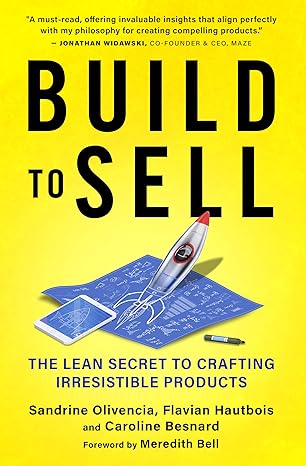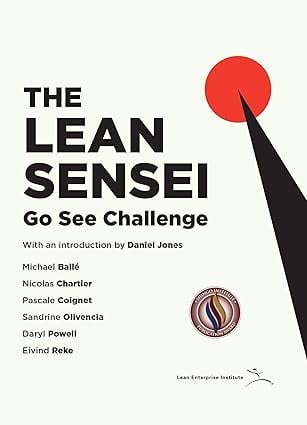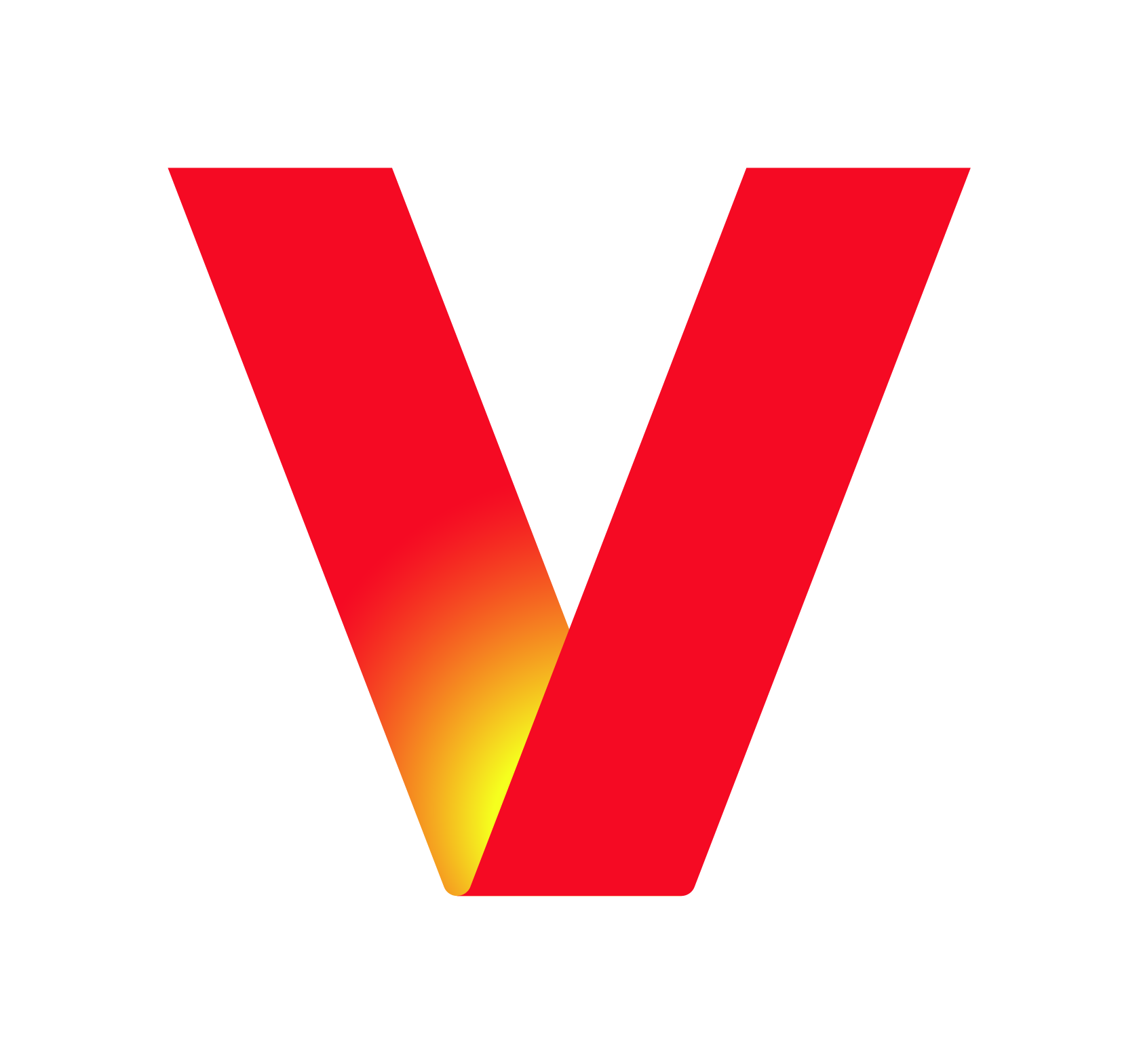Startups usually dream of scaling into business leaders, however too usually, they find yourself suffocating beneath their very own development. The very agility and buyer focus that made them profitable can disappear as they undertake processes meant for large corporations.
Toyota recognized this drawback early on and referred to as it the “massive firm syndrome”: a set of behaviors that make companies sluggish, bureaucratic, and disconnected from their prospects. The tragedy? It doesn’t simply afflict Fortune 500 corporations; it might probably kill startups, too.
I launched the concept of “iron legislation of scaleups” in my first ebook, The Lean Sensei. It states that as corporations develop, they inevitably introduce layers of complexity that gradual them down, except they actively battle towards it.
This phenomenon is on the coronary heart of what I describe in Construct to Promote, the place I spotlight how companies should frequently simplify and keep customer-focused to keep away from shedding their aggressive edge. If startups aren’t cautious, they threat falling into the identical bureaucratic traps that decelerate large companies, however with out the steadiness and money reserves to outlive it.
Listed here are the 4 main signs of massive firm illness, and how you can preserve your startup from letting them take maintain.
1. Serving the method as a substitute of serving the shopper
As corporations develop, they naturally put processes in place to create repeatable outcomes. However when these processes change into the precedence over buyer worth, the corporate begins shedding contact with its viewers. Conferences, studies, and inner politics begin taking precedence over fixing actual buyer issues. Choices are made to go well with inner preferences fairly than buyer wants, and earlier than lengthy, the corporate is working in a bubble. I’ve seen this occur as early as 20 to 30 workers.
The therapy: staying near your prospects
As an alternative of crafting methods from the highest down and anticipating individuals to execute and troubleshoot on their very own, “go and see” what’s actually taking place in your prospects’ and workers’ world. The lean philosophy teaches leaders to spend time on the “gemba”, the true place the place worth is created, to grasp their prospects’ challenges, emotional drivers, and secure preferences. Whether or not it’s direct consumer suggestions, help tickets, or dwell observations, leaders needs to be listening and adapting, similar to they did within the early days. They need to develop a routine to guide from the bottom up, whilst the corporate grows, to remain the founder they as soon as have been whereas evolving into the chief they must be.
A Serial Entrepreneur on How one can Construct and Scale Your Enterprise
The apply: analyzing buyer complaints
Do this easy but highly effective train: dedicate 30 to 60 minutes every week to research a current buyer criticism by reviewing precise buyer conversations and help tickets along with your management staff utilizing a structured five-column strategy:
Date / Buyer Criticism / Our Response / Inner Trigger / Notion Hole
Within the first column, document the date of the criticism to make sure consistency; repetition builds helpful insights. The second column captures the criticism within the buyer’s personal phrases, avoiding bias in interpretation. The third column describes how we dealt with it, prompting dialogue on whether or not we addressed it successfully, figuring out that over 70% of buyer churn is because of poor customer support. The fourth column identifies inner causes, highlighting which processes or selections led to dissatisfaction; as a result of our purpose is to enhance the system, one drawback at a time. The fifth column is a mirrored image level: examine your perspective to the shopper’s expectations. What was stunning or sudden? Did you miss one thing? Is the market shifting?
The purpose is to not leap into an motion plan; knee-jerk reactions can do extra hurt than good. The actual worth is in uncovering the place buyer focus is missing and the place processes fall quick, fairly than simply making use of fast fixes. Be ready: your management staff will need instant options, however resist the urge.
By following this weekly routine, you keep carefully linked to buyer wants whereas repeatedly refining your technique. It turns into much more efficient when a product professional or customer support supervisor prepares the desk first, fostering deeper insights and extra significant discussions.
From Startup to Scale-Up: 15 Sustainable Enterprise Development Methods
2. Defending silos as a substitute of encouraging teamwork
Within the startup part, cross-functional collaboration occurs naturally, with everybody carrying a number of hats. However as departments develop, they begin specializing and working in silos, every optimizing for its personal priorities. Constructing a company that may preserve the identical degree of service at scale is vital. Nonetheless, as groups broaden, they usually change into self-absorbed, shedding sight of the truth that they’re all a part of one worth stream, serving the identical prospects. The end result? Inner friction, wasted effort, and gradual execution, all of which in the end harm the shopper.
The therapy: break down limitations with visible administration
Transparency, collaboration, and speedy problem-solving are essential to stopping large firm ailments, the place hidden waste accumulates, undermining the shopper expertise and driving up product prices. TPS (Pondering Folks System) is a lean framework that makes work and issues seen so groups can collaborate, react rapidly, and repeatedly enhance. It’s usually represented as a home with completely different elements bringing stability and agility to the group. Every factor works collectively to create a resilient, value-driven group, the place issues are seen, groups collaborate successfully, and steady studying is on the coronary heart of all the pieces.
Born at Toyota and adopted by corporations like Pixar and Amazon, TPS helps groups prioritize what issues and take motion as soon as issues are express, with out ready for managerial management. Managers change into enablers, enhancing the system to help worth creation.
Visible administration instruments break down limitations, expose hidden workflows, and align groups round what really issues. Listed here are three examples of lean instruments:
- Drawback-solving boards: encourage open discussions, serving to leaders shift from management to help whereas addressing actual challenges.
- Kanban methods: make buyer demand stream seen, enabling groups to determine bottlenecks and reply in actual time.
- 5S technique: organizes the work surroundings for readability and effectivity, making it simpler to detect points and preserve easy operations
These instruments don’t simply set up work, they set off the appropriate conversations, cut back friction, and empower groups to create worth collectively.
19 Entrepreneurs on Utilizing CRM Software program to Scale Development
The apply: make processes, merchandise and issues seen
Study and apply TPS to construct the visible scaffolding of your corporation. Do it each day, in every single place, apply it along with your frontline groups and leaders. The sooner you begin, the higher. Do that earlier than your organization falls into the lure of “large firm ailments” with out even realizing it. Do that so you possibly can catch small points earlier than they change into main issues.
Each day, decide one space of your organization, whether or not it’s tech, product, advertising and marketing, gross sales, operations, or customer support. Apply a TPS software to higher detect issues and be taught, collectively along with your staff, how you can resolve them rapidly.
This may change your conversations along with your groups, bringing again the vitality and responsiveness of the early days whereas providing you with the construction to develop with out shedding what made your organization nice.

3. Stifling expertise as a substitute of elevating it
Center administration, caught between execution and management, usually turns into a bottleneck fairly than a bridge. As an alternative of fostering development, it stifles expertise by imposing inflexible processes, prioritizing hierarchy over experience, and shutting down concepts that problem the established order. Staff who query inefficiencies or push for change are seen as threats fairly than property. Over time, initiative dies, innovation slows, and the group turns into caught in its personal forms, disconnected from each its frontline groups and its prospects.
The therapy: construct a tradition of problem-solving and steady studying
A wholesome group values individuals who problem current practices and suggest modern concepts to resolve issues and inefficiencies. This mindset is the inspiration of true agility at scale.
The very best leaders create a protected area for drawback fixing and innovation by:
✔ Encouraging workers to floor issues brazenly fairly than conceal them
✔ Asking “why?” repeatedly to uncover root causes as a substitute of treating signs
✔ Rewarding enhancements and artistic problem-solving fairly than mere compliance
Visible administration performs a vital position in fostering this tradition. It makes work seen, serving to everybody concentrate on what issues most, and creating an interface for significant discussions between managers and staff members.
The apply: go, see, problem
How can a pacesetter break their command-and-control behavior and domesticate this new mindset? As an alternative of counting on second-hand data and distributing directions, the very best strategy is to apply the “go-see-challenge” approach, ideally with a lean sensei who may also help you notice the elephant within the room, till it turns into second nature. Incorporate these practices into your each day management routines, and watch the way it transforms your perspective and staff dynamics:
Go: go to the gemba (the true office) recurrently, at the least as soon as per week. The gemba might be a product growth staff, a customer support desk, a manufacturing line, or a logistics space. Interact in significant conversations with workers about their work. Ask how they’d resolve tough issues or enhance the state of affairs, and what obstacles they face. Pay attention actively and keep away from imposing options. Don’t simply sit in a convention room taking a look at slides—go see for your self.
See: actively seek for hidden issues, not simply the plain ones. Search for what you don’t already know or what individuals overlook as a consequence of biases or misconceptions. Ask the appropriate questions, acknowledge inefficiencies, and use lean instruments to uncover root causes. For instance, if you happen to see a backlog of incomplete duties, ask what’s inflicting the delay. Introduce visible administration instruments like Kanban to higher perceive the state of affairs and contain the staff in fixing the issues.
Problem: push your self and your staff to repeatedly query assumptions. Encourage workers to share dangerous information first to determine deeper points collectively. Keep open-minded, adapt to new insights, and help workers in creating their very own options. This builds belief and creates a tradition of steady enchancment.
Go, See, Problem at the least month-to-month, although weekly is good to remain linked with groups and actual challenges. Some lean leaders take it even additional with each day gemba walks to remain deeply engaged with area work and issues. Consistency is essential: leaders needs to be a visual, supportive presence, not simply occasional guests.

4. Complicated heritage with legacy
Some traditions and applied sciences outline an organization’s id and should be preserved, what I name heritage. Others change into out of date and maintain the corporate again as a result of they’re not related, what I name legacy. The problem is figuring out the distinction between the 2. Many corporations cling to legacy parts as a result of they’re connected to them or as a result of change calls for an excessive amount of effort. However holding on too lengthy can go away you irrelevant as opponents transfer forward. On the identical time, eradicating options or providers that prospects nonetheless worth can erode belief and loyalty.
Selecting what to maintain and what to vary is usually more durable than it appears. It requires a deep understanding of buyer worth and the applied sciences that make your product what it’s. It’s essential shield the weather prospects love whereas enhancing or changing those who not resonate. Focused enhancements based mostly on this readability assist your product evolve with out shedding its essence. Success lies in balancing continuity with change, retaining what works whereas adapting to the market, a talent that everybody within the firm should develop, particularly these shaping the way forward for your services.
The therapy: adopting a daily product innovation cycle
The important thing to managing this distinction between legacy and heritage is adopting a gentle rhythm of incremental product updates, which allows steady studying and minimizes threat. Every launch turns into a possibility to revisit what prospects worth most and assess what must evolve. Product takt, a cadence for releasing new merchandise, ensures you recurrently check market traits whereas staying true to your product’s id. This rhythm forces you to look at every change rigorously: What should you retain to keep up buyer loyalty? What do you have to replace to remain related?
The apply: setting a product takt and make clear heritage vs. legacy
Begin by setting a product “takt” time for every of your product strains. A product takt is a daily cadence for releasing new merchandise, and is aligned with the tempo of your market. This helps guarantee steady adaptation with out shedding sight of market modifications. To find out the appropriate takt time:
- Observe market traits: How usually do opponents launch updates? What’s the price of innovation in your business?
- Take heed to prospects: Observe how rapidly buyer wants evolve. Is the market secure, or do preferences shift regularly?
- Assess inner capability: Stability market expectations along with your staff’s capability to ship significant updates with out sacrificing high quality.
As soon as you identify your takt time, use every cycle to replicate on the evolution of your product and distinguish between heritage and legacy:
- Assessment your product’s historical past: What elements have remained fixed, and what has modified? How do these modifications replicate societal traits or technological developments?
- Perceive your buyer preferences: What options do they constantly use and reward, and which of them do they ignore or discover irritating?
- Analyze your opponents: Examine your opponents’ newest product iterations. What options have they eliminated—have been they legacy? What options stay constant—are they useful heritage? What design selections are evolving within the broader market, and the way do they impression your product?
These workout routines will information your selections on what to protect, what to enhance, and how you can evolve your product in ways in which preserve it related, useful, and aligned with market calls for.
Wanting Again to Leap Forward: 6 Key Areas to Revisit as Your Startup Scales
The startup benefit
Not like massive companies, startups nonetheless have the flexibility to course-correct rapidly. The secret’s to remain vigilant towards large firm ailments by sustaining a powerful buyer focus, fostering intense collaboration, elevating all skills, and difficult our legacy and heritage.
Toyota averted this destiny by embedding lean rules into its DNA. Within the Fifties, they struggled to ascertain themselves, popping out of a chapter and bank-imposed restructuring. Nonetheless, by relentless concentrate on their revolutionary methodologies now generally known as lean, they overcame these challenges and have been constantly main in world market share since 2008 after they first surpassed Common Motors. Their capability to repeatedly refine processes whereas staying customer-focused has saved them forward of opponents like Volkswagen and Common Motors.
Your startup can do the identical. Development doesn’t need to imply forms. Should you prioritize studying, adaptability, and a relentless concentrate on delivering worth, you’ll not solely scale efficiently however stay agile and linked to what issues most: your prospects and your staff’s capability to resolve actual issues collectively.


